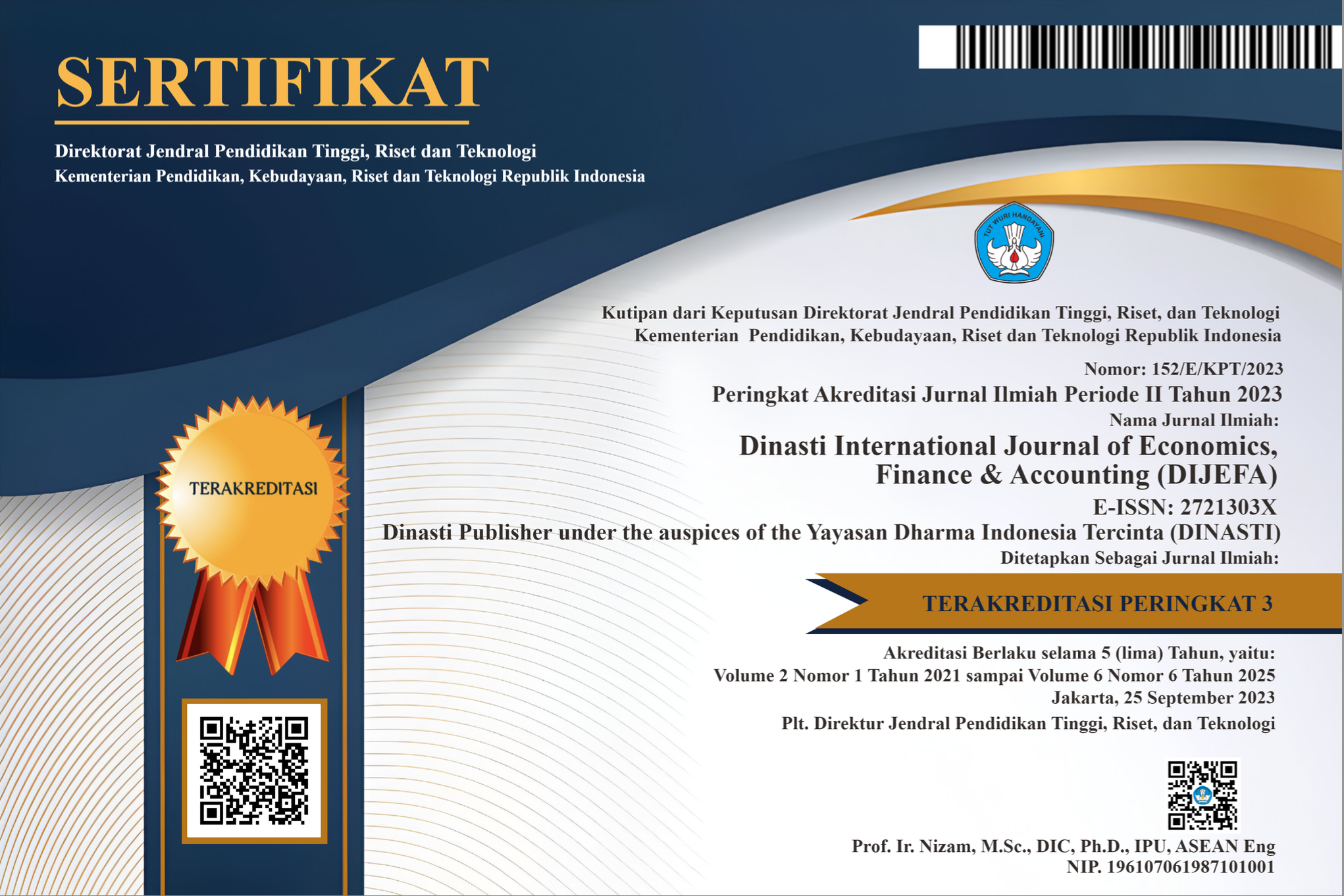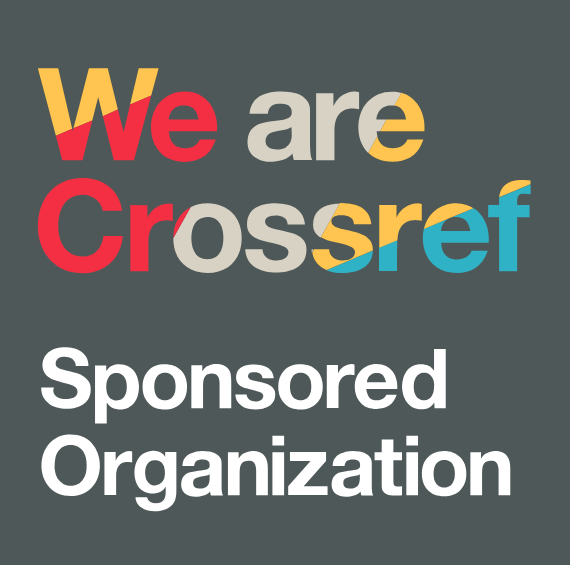Implementing of Risk Management on the Public Appraisal Service Office (KJPP) Febriman Siregar
DOI:
https://doi.org/10.38035/dijefa.v3i3.1356Keywords:
Risk, Management, EmployeeAbstract
The work of the Public Appraisal Service Office employees who are mostly in the field to meet audit candidates makes them also often receive rejections. Prolonged psychological and physical fatigue will be a challenge faced by employees. To deal with these conditions, it is important for an employee to have Risk Management in dealing with situations in the field. In doing so, we contribute to the debate in recent research on Risk Management which conceptualizes it as a series of proactive and countermeasures that employees undertake to deal with work events and uncertainties and which are linked to important organizational-level performance indicators, such as increased well-being and productivity. Thus, the context of the Public Appraisal Service Office Employees as marketers of the Public Appraisal Service Office company is a very suitable background to explore the results of the HR development strategy as an adaptive process that promotes the first individual level Risk Management which ultimately leads to team Risk Management.
References
Ambulkar, S., Blackhurst, J., & Grawe, S. (2015). Firm’s resilience to supply chain disruptions: Scale development and empirical examination. Journal of Operations Management, 33–34, 111–122. https://doi.org/10.1016/j.jom.2014.11.002
Cheema-Fox, A., LaPerla, B. R., Serafeim, G., & Wang, H. (2020). Corporate Resilience and Response During COVID-19. SSRN Electronic Journal. https://doi.org/10.2139/ssrn.3578167
Crossan, M. M., Lane, H. W., White, R. E., & White, E. (2011). Learning From Intuition To Framework. The Academy of Management Review, 24(3), 522–537.
Crossan, M., Maurer, C., & White, R. (2011). Reflections on the 2009 AMR decade award: Do we have a theory of organizational learning? Academy of Management Review, 36(3), 446–460. https://doi.org/10.5465/AMR.2011.61031806
Garavan, T. N., & Mcguire, D. (2001). Competencies and workplace learning: Some reflections on the rhetoric and the reality. Journal of Workplace Learning. https://doi.org/10.1108/13665620110391097
Henry, S. (2003a). Manajemen Sumber Daya Manusia In Manajemen Sumber Daya Manusia. In Edisi Revisi Jakarta: Bumi Aksara.
Henry, S. (2003b). Manajemen Sumber Daya Manusia In Manajemen Sumber Daya Manusia. In Edisi Revisi Jakarta: Bumi Aksara.
Joseph, M., Stone, G., & Anderson, K. (2003a). Insurance customers’ assessment of service quality: A critical evaluation. Journal of Small Business and Enterprise Development. https://doi.org/10.1108/14626000310461222
Joseph, M., Stone, G., & Anderson, K. (2003b). Insurance customers’ assessment of service quality: A critical evaluation. Journal of Small Business and Enterprise Development. https://doi.org/10.1108/14626000310461222
Kotler, P., & Armstrong, G. (2018a). Kotler & Armstrong, Principles of Marketing | Pearson. In Pearson.
Kotler, P., & Armstrong, G. (2018b). Kotler & Armstrong, Principles of Marketing | Pearson. In Pearson.
Lang, G., Mamonov, S., & Lang, K. R. (2013). Netnography. In Cross-Cultural Interaction. https://doi.org/10.4018/978-1-4666-4979-8.ch085
Lepak, D. P., & Snell, S. A. (1999). The human resource architecture: Toward a theory of human capital allocation and development. Academy of Management Review. https://doi.org/10.5465/AMR.1999.1580439
Linnenluecke, M. K. (2017). Resilience in Business and Management Research: A Review of Influential Publications and a Research Agenda. International Journal of Management Reviews. https://doi.org/10.1111/ijmr.12076
Mehrishi, P. (2014). Learning and Competency Development of Insurance Advisors Through Practice Development. Journal of the Insurance Institute of India, 2(1), 93–97.
Murale, V., Rajaiah, J., & Ashrafali. (2010). Impact of Intellectual Capital on Firm Performance : A Resource Based View Using VAIC Approach. International Journal of Business Management, Economics and Information Technology.
Rahmadana, M. F., & Sagala, G. H. (2020). Economic resilience dataset in facing physical distancing during COVID-19 global pandemic. Data in Brief. https://doi.org/10.1016/j.dib.2020.106069
Rana, F. A., & Javed, U. (2019). Psychosocial job characteristics, employee well-being, and quit intentions in Pakistan’s insurance sector. Global Business and Organizational Excellence. https://doi.org/10.1002/joe.21933
Ruggles, M., & Webster, F. (1998). Theories of the Information Society. Canadian Journal of Sociology / Cahiers Canadiens de Sociologie. https://doi.org/10.2307/3341671
Stettner, U., Aharonson, B. S., & Amburgey, T. L. (2014). The Interplay Between Exploration and Exploitation in SMEs. 49(4), 3–13. https://doi.org/10.1108/s1479-067x_2014_0000014020
Suhandiah, S., Ekowati, D., Suhariadi, F., & Yulianti, P. (2020). Role and Measurement of Employee Resilience in the Organisation : A Systematic Review on the Empirical Studies. 13(11).
Umanath, N. S., Ray, M. R., & Campbell, T. L. (1993). The Impact of Perceived Environmental Uncertainty and Perceived Agent Effectiveness on the Composition of Compensation Contracts. Management Science. https://doi.org/10.1287/mnsc.39.1.32
Vera, D., & Crossan, M. (2004). Strategic leadership and organizational learning. In Academy of Management Review. https://doi.org/10.5465/AMR.2004.12736080
Yean, T. F., & Yahya, K. K. (2013a). The influence of human resource management practices and career strategy on career satisfaction of insurance agents. International Journal of Business and Society.
Yean, T. F., & Yahya, K. K. (2013b). The influence of human resource management practices and career strategy on career satisfaction of insurance agents. International Journal of Business and Society.
Downloads
Published
How to Cite
Issue
Section
License
Authors who publish their manuscripts in this journal agree to the following conditions:
- The copyright on each article belongs to the author(s).
- The author acknowledges that the Dinasti International Journal of Economics, Finance & Accounting (DIJEFA) has the right to be the first to publish with a Creative Commons Attribution 4.0 International license (Attribution 4.0 International (CC BY 4.0).
- Authors can submit articles separately, arrange for the non-exclusive distribution of manuscripts that have been published in this journal into other versions (e.g., sent to the author's institutional repository, publication into books, etc.), by acknowledging that the manuscript has been published for the first time in the Dinasti International Journal of Economics, Finance & Accounting (DIJEFA).


























































